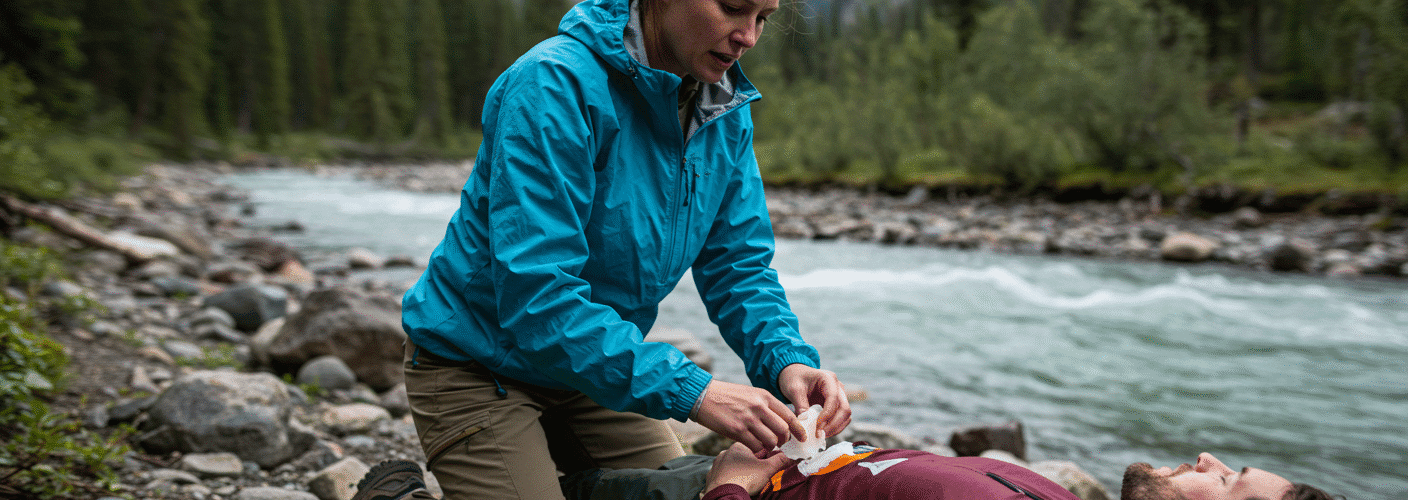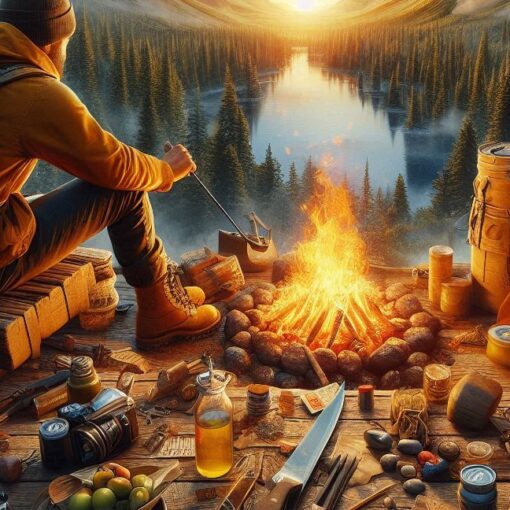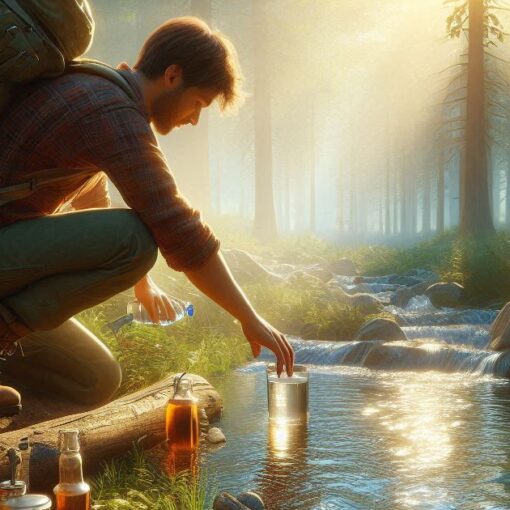Please Note: This post may contain affiliate links. If you click one of them, we may receive a commission at no extra cost to you. As an Amazon Associate, I earn from qualifying purchases.
We all wish we had secret superpowers, and survival skills are like them. You know, the ability to create a fire with just two sticks or make a tasty supper with only berries and mushrooms you find. I’m not saying you should quit your day job to become Bear Grylls, but knowing a few basic survival skills can make a big difference when Mother Nature throws you a curveball.
Top Takeaways and Key Concepts
- Learn to safely build and extinguish fire using tinder, kindling, and dirt or sand.
- Identify local edible plants and use simple fishing tools to find food outdoors.
- Navigate without GPS by using maps, a compass, and natural landmarks like rivers.
- Build quick shelters such as lean-tos or debris huts to stay warm and protected.
- Carry a first aid kit and know basic CPR and wound care to handle emergencies.
Summary of This Article
This article explains essential survival skills that anyone can learn to stay safe in nature. It covers fire-making techniques, including how to safely ignite and extinguish a campfire. It teaches how to find food through foraging and fishing and stresses the value of recognizing edible plants and being patient while fishing. Navigation skills are highlighted, especially using a compass, map, or natural landmarks like rivers and mountains. The article also shows how to create simple shelters from branches and leaves to stay warm and protected from the elements. Finally, it emphasizes carrying a first aid kit, knowing CPR, and most importantly, staying calm under pressure. Together, these skills build confidence and help you survive—and thrive—in the wild.
Video of This Article
The Art of Fire-Making
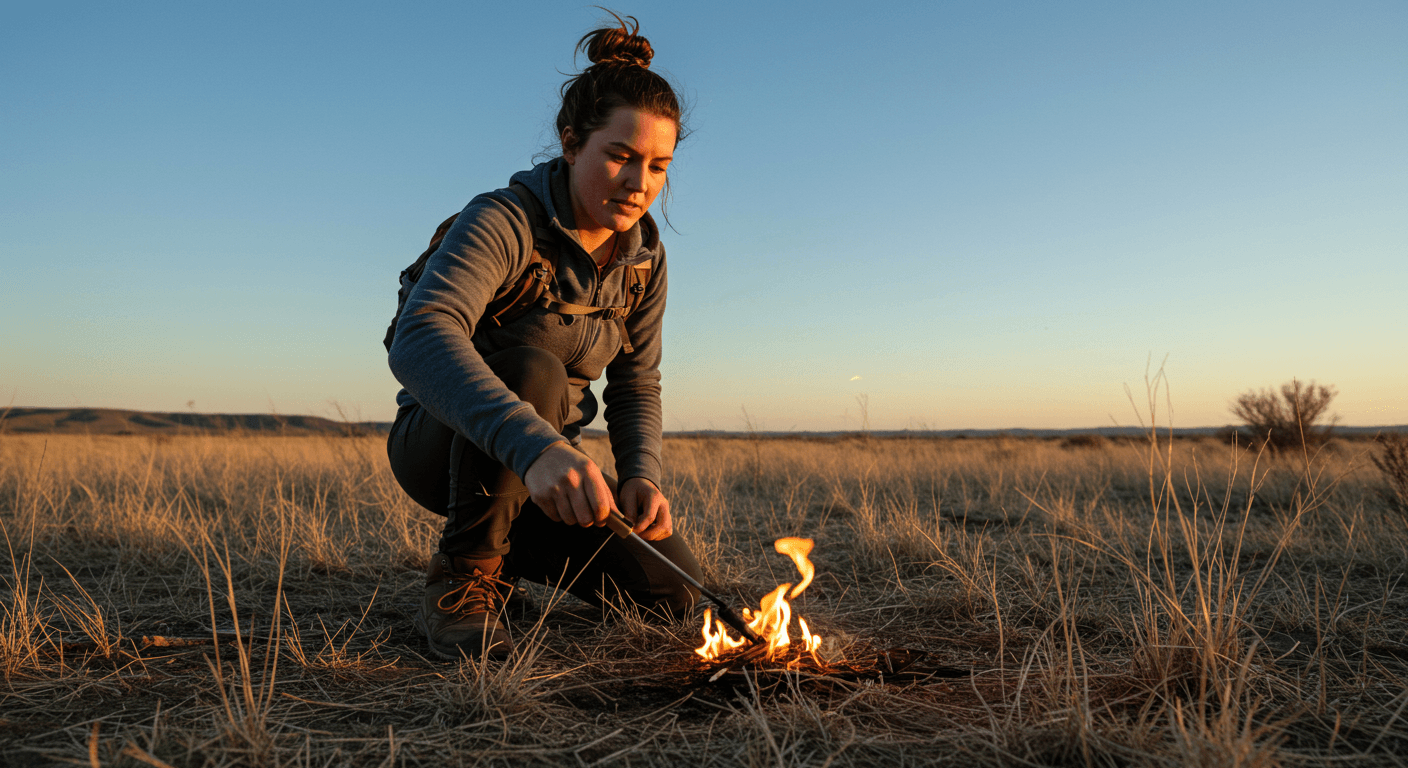
Making fire is one of the most important abilities for survival, so let’s get started. Imagine you’re out in the woods, the sun is going down, and the temperature is falling faster than ice cream on a hot summer day. What are you going to do? If you know how to build a fire, you’ll be warm and toasty in no time!
It’s not as easy as just tossing some sticks together and hoping for the best to create a fire. You need logs, kindling (small twigs), and tinder (think dried leaves or grass) to start a fire. You could even use cotton balls drenched in petroleum jelly if you want to get fancy. Trust me, they light up like fireworks! Once you have everything you need, put it in a teepee form and light the fire. Don’t forget to not set the whole forest on fire while you’re at it!
It’s interesting that learning how to put out a fire is also part of conquering it. You might assume that the best thing to do is pour water on the fire now. You know how water and fire are like oil and vinegar? But wait a minute! Putting water on a fire can sometimes make things worse instead of better, especially if you’re not careful. If you pour water on a hot fire, it can soon convert into steam. And let me tell you, steam hurts just as much as fire does! No one wants to conclude their camping trip with a bad burn because they believed they might be a firefighter.
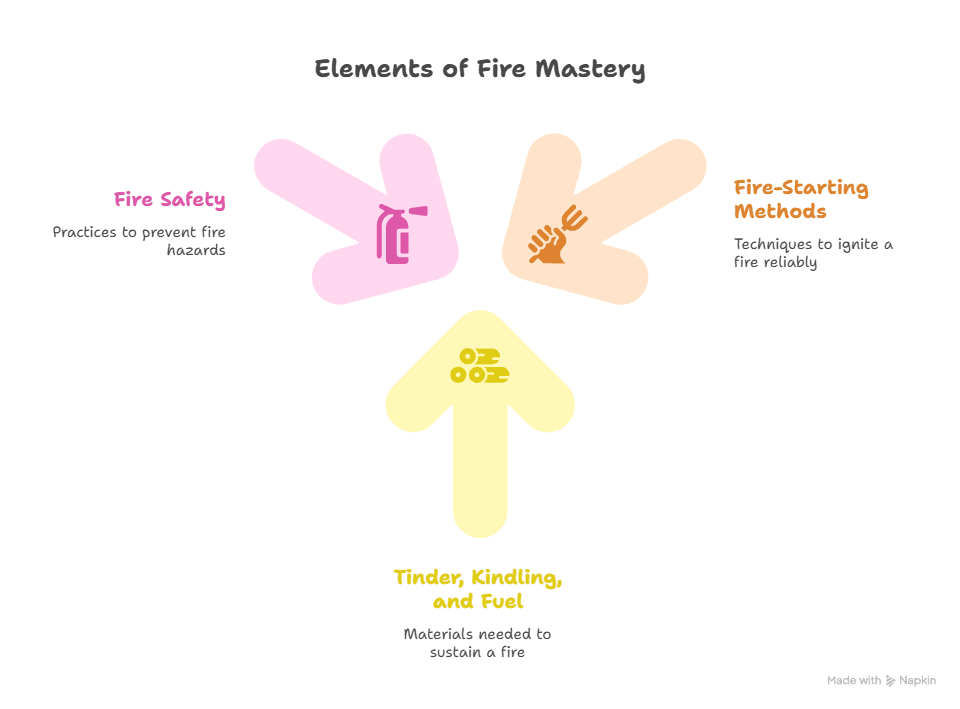
So, how can you put out your campfire without setting yourself on fire? The answer is to suffocate it the old-fashioned way! Get some soil or sand (the stuff you probably brought to make sandcastles) and start putting it on top of the embers. This method shuts off the flames’ oxygen supply and cools down the heat at the same time. It’s like putting a warm blanket on your fire, but one that keeps it from getting too hot.
While you’re doing this, make sure to properly spread the soil or sand over all of the fire pit. If you don’t, those sneaky little embers can spring back up when you least expect them, like an unwanted party guest who won’t leave! After you’ve coated everything well, let it cool down for a while before you touch the ashes. There could still be hot patches underneath, even if it looks dead on top.
This is where it becomes very important to leave no trace. A responsible camper realizes that nature is a place we all play and should be treated with respect. You may make sure that future campers have a good time by putting out your fire completely and covering it up properly. It’s like finding a half-eaten sandwich at a picnic (yuck!). Plus, it’s just good karma to be outside!
In short, learning how to put out a fire isn’t only about your own safety; it’s also about being nice to the people that come after you. So, the next time you’re sitting around a campfire under the stars and thinking about how to put it out, remember that smothering is the key! Your fellow travelers and Mother Nature will be grateful!
Finding Food in the Wild
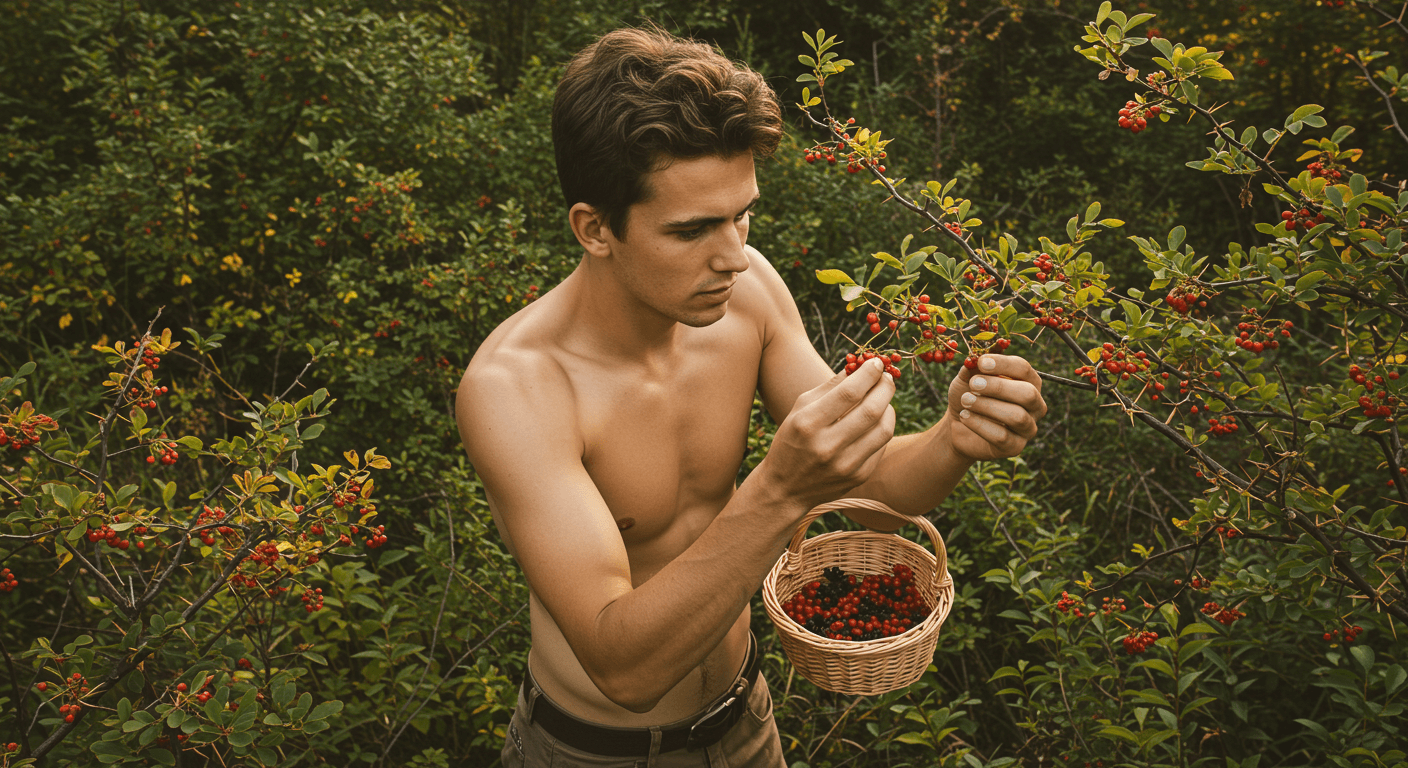
Let’s speak about food now, since let’s be honest: it’s a lot more fun to survive when there’s something good involved! Foraging can seem scary at first since you don’t want to consume something dangerous and end up as meal for your own stomach. But don’t be afraid! You can become a great wild chef if you know a little bit about plants and berries that you can eat.
Before you go into nature’s pantry, understand about the plants that grow in your area. Learn about popular edible plants like dandelions (yeah, those annoying weeds) and clover blooms. Who knew they could be so helpful? Don’t forget about nuts, either. Acorns might not appear good at first, but roasting them can make them taste unexpectedly good!
If you’re near a body of water, fishing is another great option to get dinner. It’s like a drive-thru for nature—just throw in your line and wait for something tasty to bite! Before you start seeing yourself as a tough Hemingway-type fighting a monster marlin, let me tell you that fishing doesn’t have to be that exciting. You don’t need a lot of sophisticated gear or a lot of fishing experience; all you really need is some simple line and hooks.
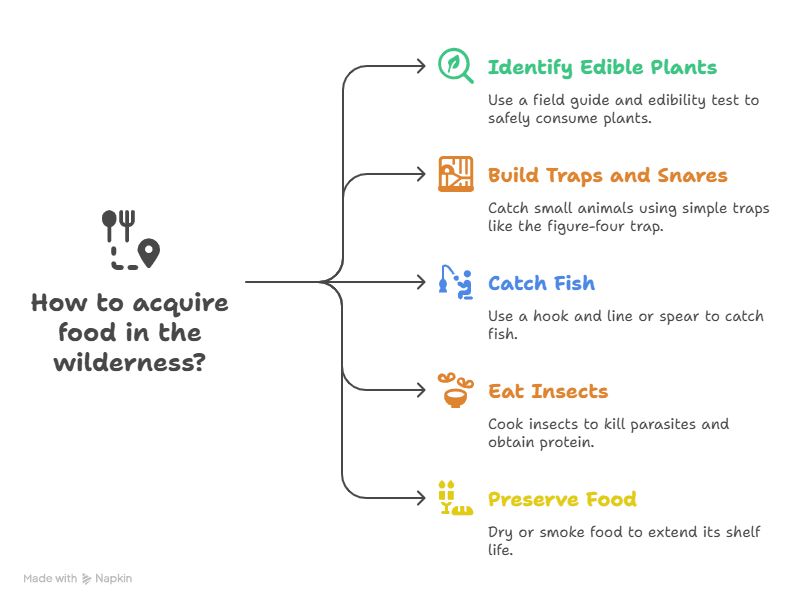
Picture this: you’re sitting at the water’s edge, the sun shining on your face, and the waves are gently lapping against the shore. Just throw your line into the water and then relax for a while. It’s a lot like meditation, except you can have snacks later. I really think that half the excitement of fishing is just being in nature and thinking about what tasty fish meal you’ll make later. Tacos with grilled salmon? Fish stew? There are so many options!
If you’re new to fishing or have been doing it for a while, here are some techniques that will help you catch more fish. First, make sure you have bait that fish will really eat, because they can be very particular about what they consume. Worms are a classic choice since fish love them. You may also use lures that look like smaller fish or bugs. These are like little appetizers that will make those fish want to bite.
While you wait for a bite on your line, it’s important to be patient. When you fish, you frequently need to be more zen than active. Sometimes it feels like you’re just staring at water for a long time. But hey, every minute you wait is one less minute you have to worry about things back home! And when that moment finally arrives and you feel a pull on your line, it’s all adrenaline! Your pulse racing as you reel in your catch. All of those times when you were still feel like they were worth it now.
It’s time to fry your prize fish (or at least something big enough not to be embarrassed about) once you’ve caught it. When you cook fresh fish over a campfire or even on a portable grill, it tastes amazing. If you could cook up some sizzling fillets with fresh herbs and maybe even some wild greens you found nearby, it would be the best camping ever!
In short, fishing is a fun outdoor sport that combines leisure and excitement in the best way possible. It’s also a great method to obtain dinner. So, the next time you’re near water and hungry, remember to grab some line and hooks and try it out. You might catch dinner while enjoying the beauty of nature!
Navigating Without GPS
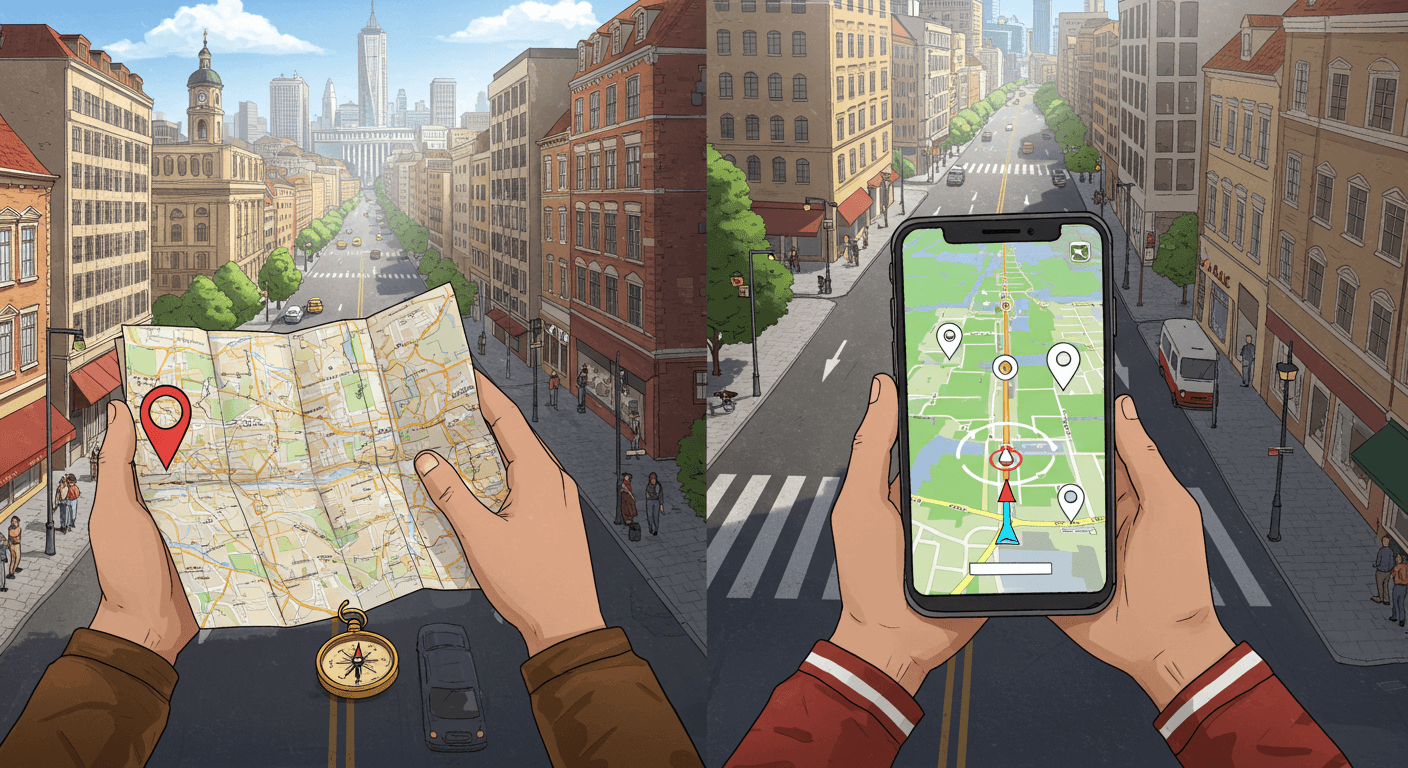
In a world where cellphones control our lives like a baby with a toy crown, being able to go about without GPS is an important survival skill. It sounds terrible to be lost in the woods with only your wits about you. But don’t worry; this skill will save your life!
First things first: learn how to read a map and use a compass. These tools have been helping explorers find their way since long before cellphones were invented (and they still work!). It’s also really cool to determine north during the day by just looking at where shadows fall.
If you ever find yourself in a position where you can’t find any tools—like a map or compass—don’t freak out! Just breathe deeply and gaze around. Nature often gives you a method to find your way, and it’s usually right in front of you. You can use mountains, rivers, and even unusual rock formations as cues to get home. It’s like a GPS from Mother Nature, but without the obnoxious voice that says “recalculate.”
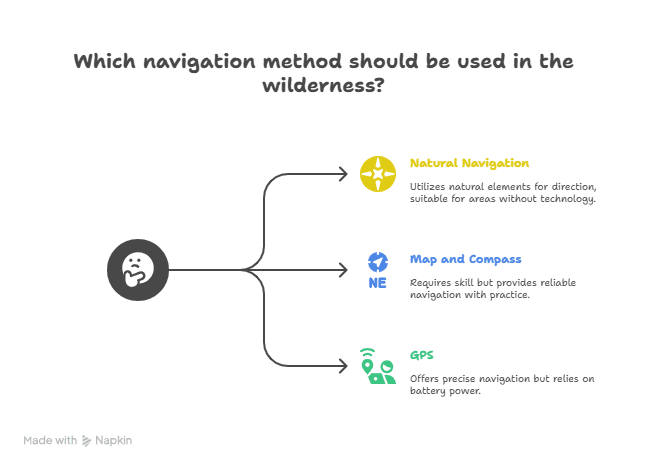
Let’s start with mountains. They’re those huge things that don’t only look nice; they can actually help you find your way! Use the direction of the mountain range in relation to where you started as your reference point. For instance, if the big peak is to your left as you start walking, maintain it on your left side as you go. This easy trick can help you not go in circles like a chicken that doesn’t know what to do.
Rivers are fantastic for fishing and cooling off on a hot day, but they also flow down to bigger bodies of water. If you see one while you’re out and about in a new place, follow it! People usually construct near water sources, like rivers, because who doesn’t love a nice splash? That’s why rivers usually lead to settlements or roads. And if you’re really thirsty after all that walking, well… let’s just say that pure river water (after being filtered) is better than dehydrated snacks any day!
Other natural things can also assist you find your path, which is interesting. Look for trees that stand out or rocks that are shaped in strange ways; they can help you find your way. Certain kinds of trees can even tell you what kind of environment you’re in. For example, pine trees normally signify you’re going to higher altitudes, while palm trees could mean you’re getting closer to warmer climes (or at least a place with better beach vibes).
Now things become really fun: keeping track of these landmarks isn’t only useful; it may also make it a lot less scary to walk through places you don’t know. I get that you could feel confused and overwhelmed by how big nature is, but focusing on things you can see might help you feel more grounded. When everything else seems out of control, it provides you something real to grab on to.
We all know what it’s like to feel completely lost, as when you’re trying to find your way throughout IKEA without an exit sign. But believe me, using natural landmarks will make you feel more sure of yourself as you walk forward instead of worried about being “lost.” Also, it’s very fulfilling to find your way with only what nature gives you.
So the next time you’re out exploring or accidently going off course on a trek (it happens!), remember to look around before you start to fear. What about those rivers and mountains? They aren’t just pretty to look at; they’re also dependable buddies who will help you find your way home through the wilderness!
Building Shelter Like A Pro
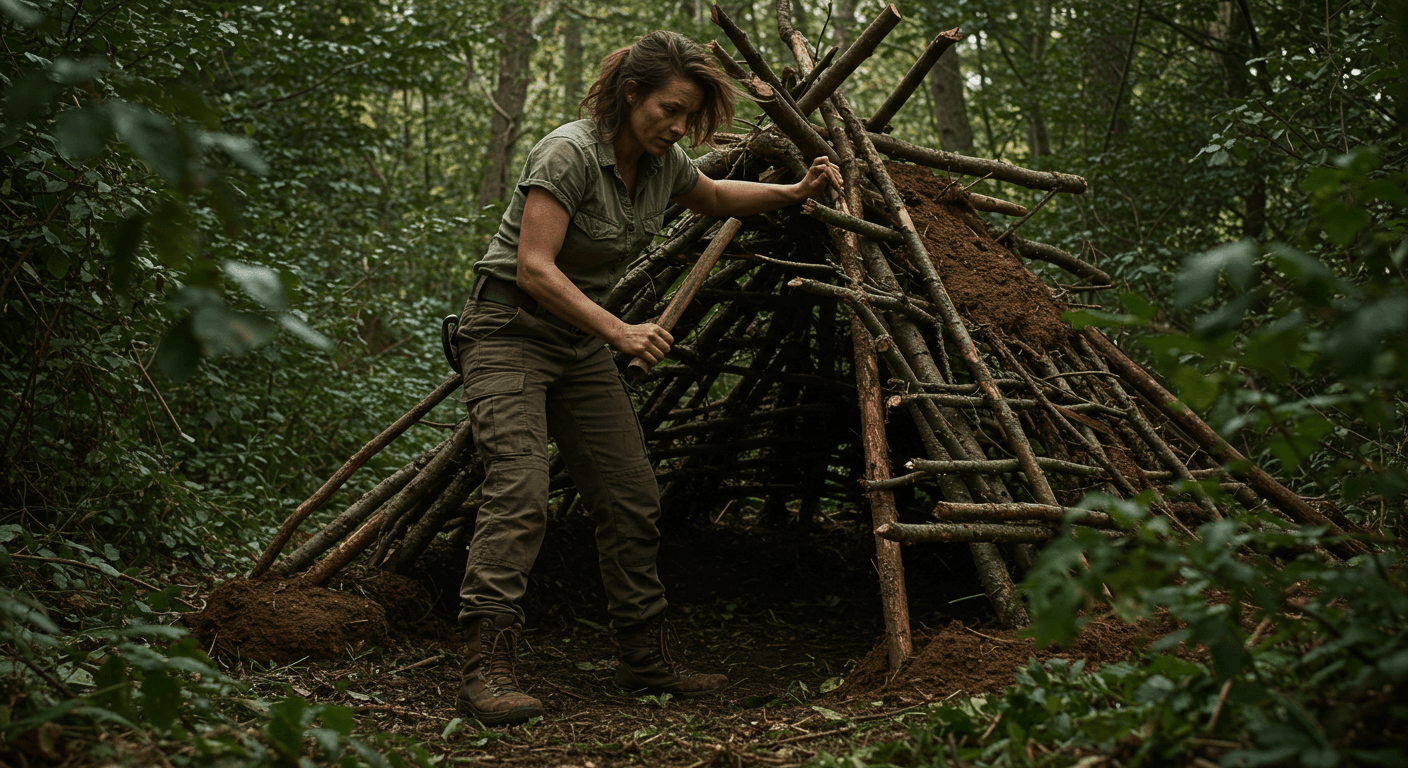
A strong shelter is very important when the weather is bad or when bears show up unexpectedly. Building one is like putting together a really complicated jigsaw where every piece is vitally important… It’s not about picture-perfect scenes of cats playing piano music quietly in the background; it’s more about remaining dry and not getting too cold!
If you need to create a quick shelter and don’t have any fancy tools, lean-tos are a perfect choice. To be honest, they’re like the Swiss Army knife of shelters for survival: basic but useful! You only need three strong branches that can make an A-frame shape against the trunk of a tree. It’s like playing with big sticks, but with a purpose! Now that your frame is ready, you can start being creative with insulation. Put leaves or pine needles on those branches. Believe me, this is a great way to keep the heat close and the cold away.
Let’s talk about debris huts now because they make things more cozier! These constructions are like covering yourself in a blanket from nature. To make one, you need to find a strong base of fallen branches. To make an archway shape, you’ll need to lean them against something strong, like another tree. The point of this is to make sure there’s enough space inside for you to curl up comfortably. It’s time to add the leaves once you’ve set up your frame!
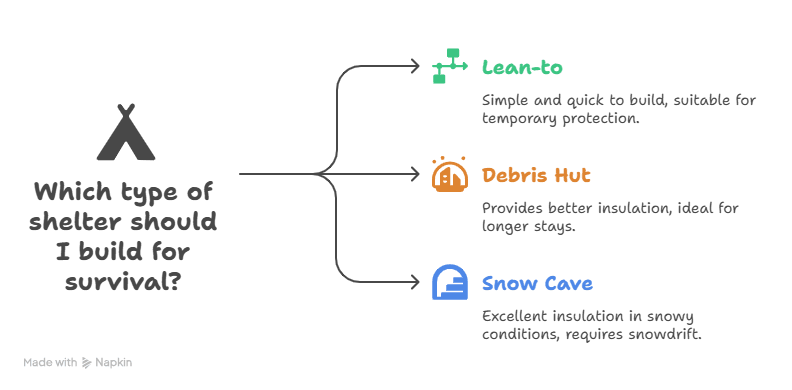
Using thick layers of leaves and other natural materials not only keeps the heat in, but it also hides your home from anybody who want to see it. It’s like nature’s stealth mode! When you stack those layers on top of each other, keep in mind that more is better when it comes to insulation. No one wants to be shivering all night long like they’re trying out for a winter survival reality show!
It’s interesting because making these shelters might seem like a game at first, but there is serious science behind how well they work. Air trapped between layers of leaves and debris works as an insulator. It keeps heat from escaping and shelters you from the cold wind. So even though you could be acting like a kid playing in a fort made of pillows at home, you’re really using some serious survival skills!
When making a debris hut or lean-to, don’t forget about ventilation. You want it to be warm but not too warm. Leaving small gaps lets fresh air in while keeping most things out (and let’s face it, no one likes sleeping next to wet leaves). If you’ve done everything well and put a lot of cover on top to keep you warm and safe from rain or snow, you’ll have a pretty cozy little hideaway.
And here’s something cool: once you know how to make these shelters, you’ll have learned useful skills that you can use for more than simply camping. Whether you’re trekking, dealing with sudden weather changes while you’re outside (or even just trying to avoid annoying relatives at family gatherings), knowing how to make a rapid shelter provides you peace of mind and confidence.
So pick up those branches and let your inner architect out! You can make warm havens in the woods with just a few natural materials and maybe a little ingenuity. Adventure is waiting just beyond your door… or, well, outside your green roof!
But really? Here, practice makes perfect. You don’t want to have to build shelter for the first time in a real storm when things get really scary!
Basic First Aid Knowledge
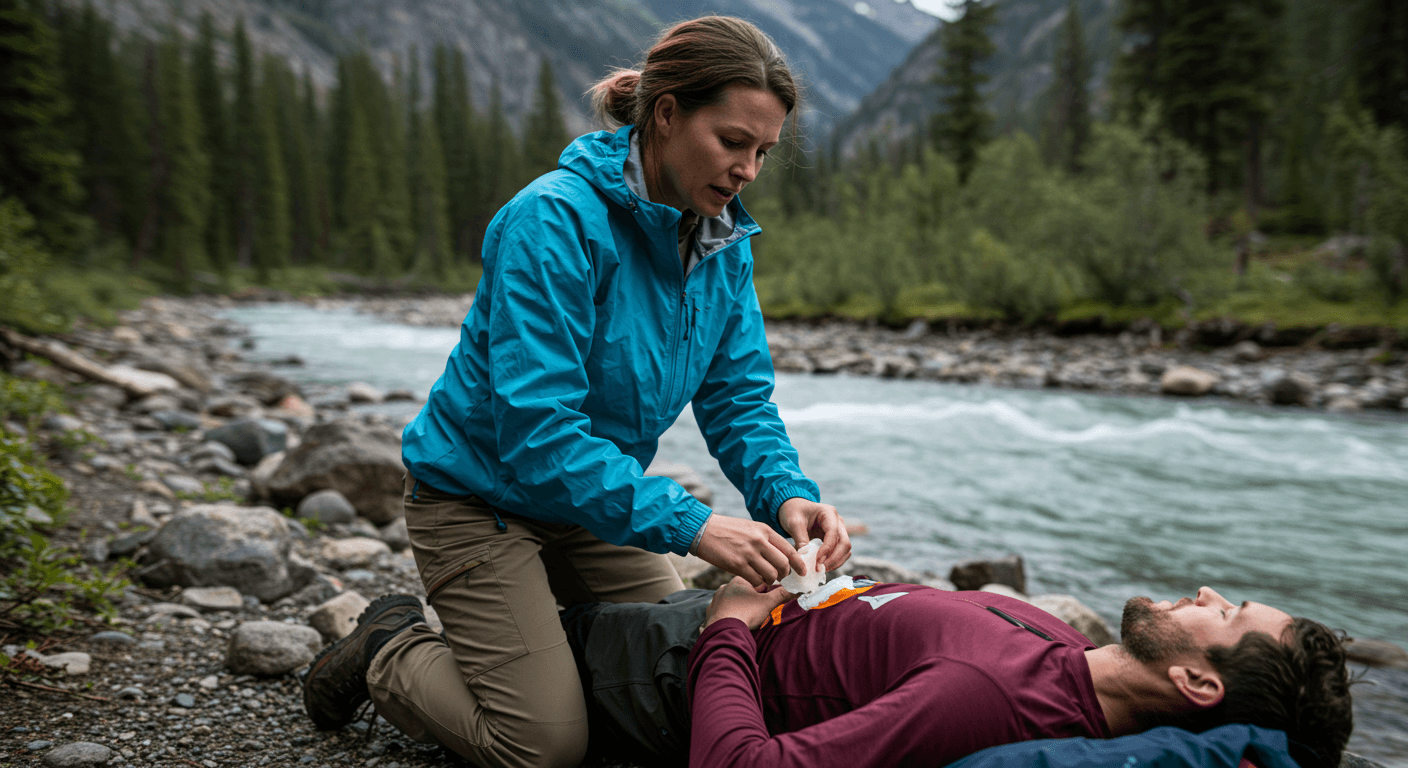
You can’t talk about survival skills without talking about basic first aid knowledge. Accidents happen, even when you’re trying to impress your buddies by climbing trees like Tarzan! Everyone will be safe until expert aid arrives if they know how to manage cuts, scrapes, sprains, burns, and anything else life throws at them.
A good first aid kit is one of the most important things to bring on any trip. Think of it as your own safety net that will catch you when life throws you a curveball, like when I fell over my own feet while trying to impress a group of hikers. So, what should you put in this treasure chest of medical needs? Let’s begin with adhesive bandages. These little heroes are great for covering up little cuts and scrapes. You know, the sort that happen just as you’re going to go on a great trek or picnic.
Antiseptic wipes are next! To be honest, they’re like magic wipes that keep viruses away. Picture this: you’ve just finished setting up camp, and you see that you’ve got dirt under your nails from all that hard labor (and maybe a few scratches too). Not only will a short swipe with an antiseptic wipe clean those wounds, but it will also make you feel better knowing you’re lowering the danger of infection. It’s like giving your injuries a little pampering!
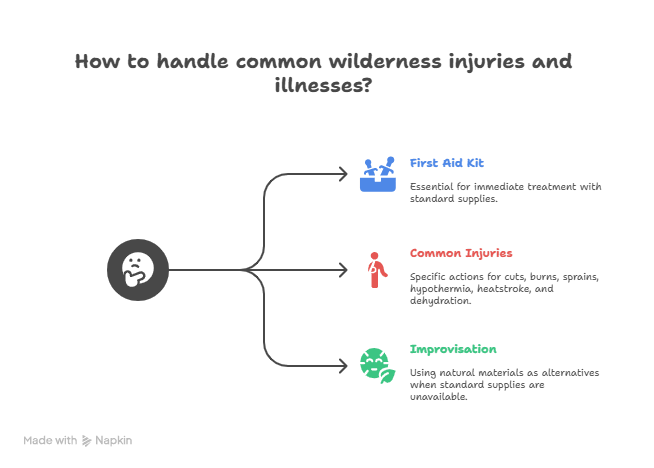
Gauze wraps are now necessary for those instances when a band-aid won’t do the trick—pun intended! These bandages can help stop bleeding and protect the area until you can get to a doctor if you or someone else has a worse wound. They can be utilized in a lot of different scenarios, thus they should always be in a well-stocked first aid bag.
Don’t forget about pain relievers when you’re getting ready! Having some pain management alternatives on hand may make a big difference in keeping spirits high during outdoor adventures, whether it’s ibuprofen for sore muscles after a long hike or aspirin for headaches induced by too much sun exposure (or maybe too much enthusiasm). Who wants to be grumpy when they’re outside?
If you’re feeling extra brave or are going to places where there are a lot of snakes, you might want to think about putting snakebite kits in your bag. I’m not saying you’ll see snakes on every trip (though it would be nice if they wore little warning signs), but it’s always a good idea to be ready. These packages usually include with suction devices and other items that can help if you run into one of our slithery buddies by accident.
In addition to having the right tools, knowing the basics of CPR could save lives one day! Knowing how to be calm and handle emergencies well is one of the best things you can do. Think about taking classes from licensed teachers that give you both academic information and hands-on practice. Reading about how to do CPR is one thing, but practicing on mannequins while trying to save someone’s life is a whole other thing!
Not only will learning CPR make you feel more confident while you’re out and about and accidents could happen, but it might also help you deal with ordinary problems at home. You never know when someone will need help during a family reunion or a neighborhood event. Plus, think about how great it will feel when your friends regard you as their go-to lifesaver, like a real hero!
So keep this in mind: whether you’re hiking in the woods or having a cookout with friends in your garden, bringing these things and practicing those important skills will make sure you’re ready for any crazy adventures that come your way! Enjoy the great outdoors with confidence, knowing that your gear and knowledge are functioning together perfectly. That’s something to celebrate!
And let’s be honest: having someone with these talents around during crises makes group outings a lot less stressful than playing doctor without any supplies around, which never ends well!
Staying Calm Under Pressure
Last but not least (is that even a word?), staying calm under pressure is one of the most important survival skills anyone can have today, especially with all the crazy things happening around us that we can’t control or even begin to understand since 2020 came crashing down on humanity all at once, everywhere in the world… phew!
When disaster strikes, whether it’s a natural disaster or a man-made crisis, staying calm helps you think more clearly and make decisions more quickly and effectively, instead of going into panic mode like chickens running around aimlessly in fields looking for shelter anywhere they can find it. Breathe deeply, everyone!
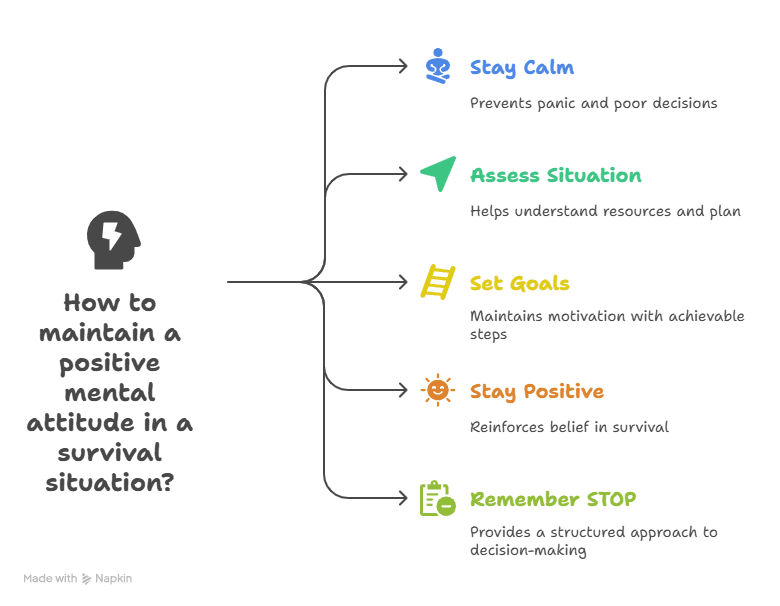
Practicing mindfulness techniques ahead of time helps you be more resilient and ready to face challenges head-on with confidence, moving forward boldly and bravely no matter what comes next, knocking loudly at doors and demanding attention that is urgently needed now, right away, please hurry up already, oh goodness gracious why won’t anything cooperate nicely?!
Remember, everyone, the real adventure isn’t just surviving alone; it’s thriving together through shared experiences that create bonds and memories that last a lifetime. After the storms pass, there will be calmer waters waiting to be explored again, hopefully soon, fingers crossed, wishing, praying, and dreaming really hard right now…
Frequently Asked Questions
What are the most important survival skills to learn first?
The most important skills to start with are fire-making, building shelter, basic navigation, first aid, and finding food in the wild. These core abilities keep you warm, safe, fed, and alive in almost any survival situation.
How do I safely build and extinguish a campfire?
To build a fire, use a base of tinder like dry grass, kindling like small twigs, and larger logs on top. Shape it like a teepee for good airflow. To extinguish it, never just pour water—smother the fire with dirt or sand to cut off oxygen and prevent burns from steam.
What foods can I safely eat in the wild?
Safe food options include edible plants like dandelions, clover, and berries you can positively identify. Roasted acorns and nuts are also great energy sources. If you’re near water, simple fishing gear like hooks and line can help you catch fish for protein.
How can I find my way without a GPS or phone?
Use a map and compass if available. If not, rely on natural landmarks—rivers usually lead to towns, mountains help you keep direction, and unusual trees or rock shapes can act as markers. Pay attention to your surroundings to avoid walking in circles.
What is the easiest survival shelter to build quickly?
A lean-to shelter is one of the simplest and fastest. Use sturdy branches to build an A-frame against a tree, then cover it with leaves or pine needles for insulation. If you need more warmth, build a debris hut with thick layers of leaves to trap body heat.
What should be in a basic survival first aid kit?
A good first aid kit includes adhesive bandages, antiseptic wipes, gauze, pain relievers, and tweezers. Optional but useful additions include a snakebite kit and medical tape. Knowing CPR and how to treat wounds is equally important as having the gear.
How do I stay calm in a dangerous survival situation?
Staying calm starts with controlling your breathing and focusing on solving one problem at a time. Panic clouds judgment, but clear thinking keeps you alive. Practicing survival skills beforehand builds confidence so you’re ready when real emergencies happen.
Suggested Resources
Survival Skills Every Kid Should Know
https://www.scoutingmagazine.org/2021/06/survival-skills-every-kid-should-know/
The Ultimate Guide to Wilderness Survival
https://www.outdoorlife.com/story/survival/the-ultimate-guide-to-wilderness-survival/
Basic Wilderness Survival Skills
https://www.survivalsullivan.com/wilderness-survival-skills/

Kevin Collier is a seasoned outdoor enthusiast and writer for Trekbug.com, specializing in outdoor adventures, survival strategies, and prepping insights. With a deep love for nature and a commitment to self-sufficiency, Kevin empowers readers to embrace the wilderness confidently. He shares valuable tips, practical techniques, and inspiring stories, helping both novice and experienced adventurers develop essential skills for surviving and thriving in the great outdoors.

